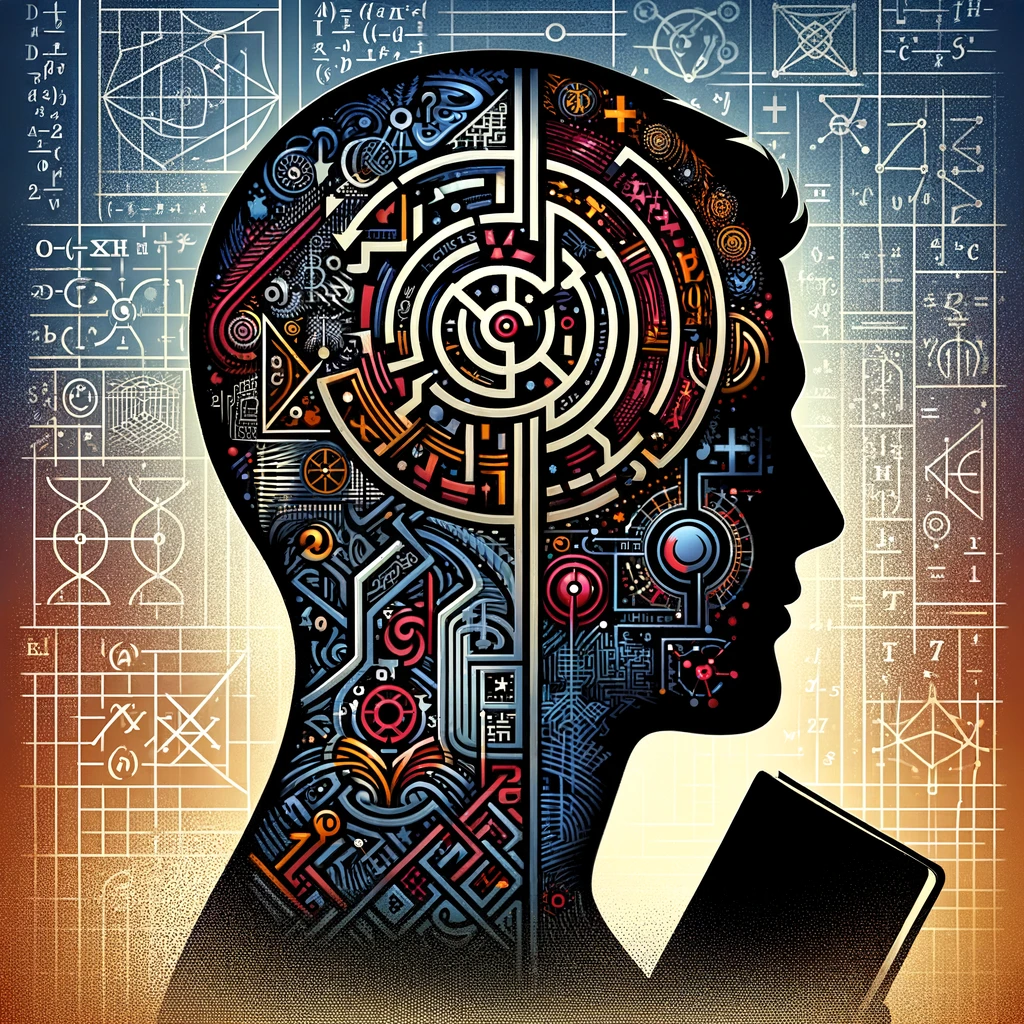
Book review: Logicomix (an epic search for truth)
- Law Prep with Josh
- Book review: Logicomix (an epic search for truth)
Book review: Logicomix (an epic search for truth)

Picture Bertrand Russell, a towering figure in logic, delivering a lecture on the foundations of mathematics, only to be interrupted by a protestor screaming, “Stop this nonsense!” This compelling moment in “Logicomix,” a graphic novel exploring the lives of history’s great logicians, captures the paradoxical tension between logic and madness. It’s a topic that I feel isn’t just confined to philosophical debates or graphic novel fans. Lawyers need to engage in a healthy questioning of our dependence on logical frameworks.
Storytelling Mechanics
“Logicomix” is a unique creature, using vivid artwork and intricate dialogue to bring to life historical figures like Russell, Gödel, and Wittgenstein. These elements serve the larger theme by visually contrasting the orderly nature of logic against chaotic emotional scenes, thereby painting a picture of dichotomy. The graphic novel format works to great advantage. It engages multiple senses, making the dichotomy between logic and emotion palpable in a way that traditional text or even film might not capture as effectively.
The Titans and Their Shadows
The novel doesn’t just glorify the intellectual pursuits of these giants but also dives into their troubled lives and minds.
Bertrand Russell: The Man Behind the Mind
Bertrand Russell, the principal narrator and character in “Logicomix,” presents himself as a stoic philosopher, concerned solely with the lofty ideals of logic and reason. The book portrays his strained relationship with his first wife, Alys Pearsall Smith, and his infatuation with his best friend’s wife, casting a shadow over his scholarly pursuits. Along the way, he remains haunted by a childhood fear of thunder, despite understanding its scientific basis. Every traumatic moment traced in the novel is punctuated by bursts of thunder and poor Bertie’s wide-eyed trembling. No amount of rational explanation can fully exorcise his irrational fears. It casts doubt on the assumption that understanding the ‘why’ of something will inevitably remove our emotional responses to it. The man who spent a lifetime yearning for rationality in thought had a personal life marked by emotional chaos.
Wittgenstein: The Maverick Philosopher
Ludwig Wittgenstein is probably my favorite character in “Logicomix,” not just for his groundbreaking ideas in logic and the philosophy of language but also for his authentic – some might say idiosyncratic – life choices. Wittgenstein was heir to one of Europe’s greatest fortunes but gave away his inheritance, believing it to be a distraction. He then took up roles ranging from an elementary school teacher in rural Austria to a volunteer in World War I, where he willingly risked his life on the front lines. To me, these actions epitomize a zest for life. For example, Wittgenstein’s decision to abandon his family’s considerable fortune defies conventional wisdom about self-interest. But rather than viewing this as an irrational move, it could be seen as an intensely personal form of rationality. Wittgenstein wasn’t just a philosopher on paper; he lived his questions. His relinquishing of material wealth demonstrates a kind of radical commitment to his philosophical ideas, challenging our common notions of what is rational or sensible. One has to acknowledge the role of luck, though, in his survival, and in his privileged inheritance of all that wealth in the first place.
Gödel: The Skeptic
Kurt Gödel’s skepticism and paranoia are well captured in “Logicomix.” Gödel’s incompleteness theorems established that in any system, there would be propositions that couldn’t be proven within that system. The book shows us a man behind the groundbreaking theory that shook the foundations of mathematics and logic: an increasingly distrusting recluse. This skepticism isn’t merely academic; it permeates his daily life. He is shown to isolate himself, developing an extreme form of agoraphobia and even questioning whether he should eat, ultimately leading to his self-imposed starvation. I’ll say that again: Gödel was so obsessed with his ideas that he starved himself to death out of fear his food would be poisoned. His distrust is not just an intellectual pose but a way of life that he paid for dearly.
Cantor: The Visual Madness
The Georg Cantor character offers us a visually rich depiction of a mind teetering on the brink of both genius and madness. Cantor’s set theory led him to conclude that some infinities are larger than others, an idea so counterintuitive it questioned the nature of reality itself—and drove him toward emotional collapse. The panels portraying Cantor often show him surrounded by infinite sets and mathematical symbols, sketched in frenzied lines that mirror his internal chaos. As he dives deeper into his theories on different types of infinity, the visuals show him increasingly isolated and shrouded in shadows. The use of darker tones and chaotic imagery underscores Cantor’s obsession with the infinite and serves as a visual metaphor for his eventual descent into madness.
The fictional depiction of historical characters in “Logicomix” serves as cautionary tales, pushing us to reflect on the intersection of genius and madness. These figures, obsessed with logical completeness, show that an intense focus on logic isn’t enough to create a complete, well-rounded human being. It suggests that while the pursuit is noble, it’s also perilous. The quest for irrefutable facts is a rabbit hole that leads to a “wonderland” of personal anguish. Several references to Lewis Carrol’s “Alice in Wonderland” are sprinkled throughout as reminders.
The Relativity of Truth
Law, like logic, seeks to create an ordered system from chaos. But it’s easy to get ensnared in the labyrinthine quest for ‘absolute truth.’ The logic we proudly tout as underpinning the laws we study is, like all human constructs, fallible and incomplete. Logic should be used as a tool for understanding, not as an unyielding dogma. “Logicomix” reminds us to temper logic with emotion, striving for objectivity while staying grounded in our subjective experience. Don’t get lost in all the case laws, statutes, and doctrines: step back and look at the broader canvas of human experience. Law, after all, is for the people, by the people. It would be ironic, and tragic, to let humanity get lost in the logic.
The Balancing Act: Guarding Against Absolutism
How can I, the legal professional or student, protect myself from the pitfalls of logical absolutism? My lesson from Logicomix is that a balanced approach couples rigorous study with self-awareness. Law is as much about interpreting human behavior and motives as it is about tracing formal logic to argue points of law. Try a hobby. Sports, art, literature – yes, including graphic novels like this one. These add a layer of richness and complexity to one’s thinking, making them more adept at navigating the gray areas that law so often confronts. It won’t make you a better logician but it will help you emotionally cope with the uncertainty.
The Underrated Asset: Emotional Intelligence
Legal practitioners often find themselves in emotionally charged situations—a high-stakes negotiation, a courtroom battle, or a tough law exam that won’t wait for your poor golden retriever’s hip surgery. Recognizing, understanding, and managing emotions can be as critical as one’s ability to construct a sound argument. Emotional intelligence ensures that one’s logic serves the situation, rather than dictating it, creating a practice that’s both compassionate and effective.
Beyond Logic: Recognizing Limitations
Finally, there are areas of law where the limits of logic are glaringly obvious. Scenarios involving subjective experiences such as pain and suffering, or the valuation of lost companionship in wrongful death cases. Here pure logic can miss by failing to capture the nuances of human experience. Understand these limitations and remind yourself that sometimes the questions matter more than the answers. This will help you deploy logic as a tool that is both intellectually rigorous and used for humane purposes.
Josh's LSAT Tutoring
Related Post


Logical Reasoning: Cheat Sheets

Why You Should Do Nothing

